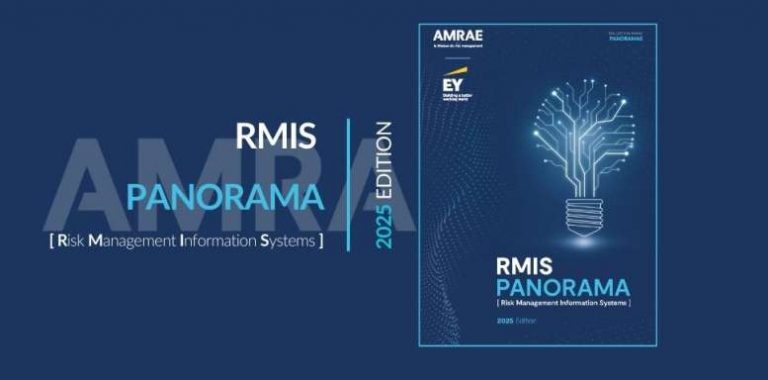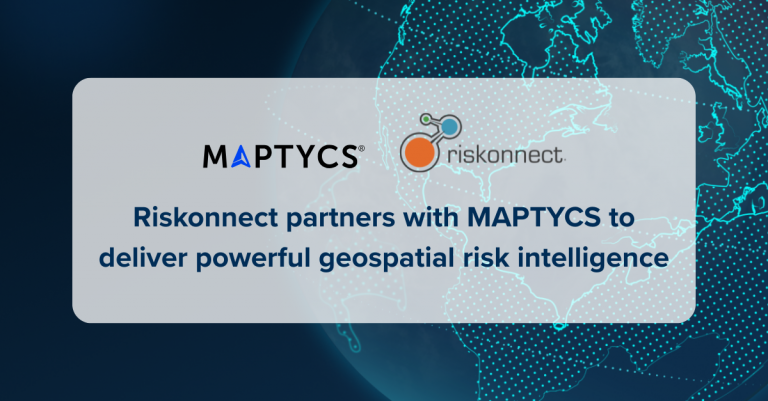Founded in 2016, Maptycs provides a geospatial risk visualisation platform for property insurers, reinsurers, brokers and risk managers. Ali Smedley caught up with CEO and Co-founder Jacqueline Legrand to discuss how the Maptycs’ platform can support risk selection, pricing and event response, the company’s new climate risk analysis module and plans to integrate even more property intelligence data over 2023.
Jacqueline, what is your background and why did you found Maptycs?
JL: I started my career in technology with IBM before joining the insurance industry over two decades ago. I held sales and senior executive positions in brokerage companies in France, the US, Portugal and Brazil. Until the end of 2018 I was the CEO of Brokerslink, one of the largest global networks of independent brokers.
As a broker, I placed large and complex property risks on the London and US markets. I experienced first-hand the challenges of analysing catastrophe exposure and risk aggregations for portfolios in different geographies. This led me to found Maptycs, a geospatial solution to manage property risk exposure, track accumulations and monitor severe weather events in real time.
What problem does Maptycs solve for the insurance industry?
JL: Natural disasters are increasing in both frequency and severity. At the same time, more high-resolution location-based data and catastrophe models are being developed by specialist companies. Insurers need to access and consolidate these increasingly complex property intelligence data sets to remain competitive and generate underwriting profits, but their legacy systems may be unable to efficiently process high volumes of data in multiple formats.
Maptycs provides an “à la carte” location intelligence data aggregator platform with powerful geospatial analytics to support risk selection, pricing and event response.
What does the Maptycs solution offer?
JL: Maptycs provides a platform to manage property risk exposure, undertake climate risk analysis and enable event response all in one place. Clients can upload their portfolios along with their own data layers and catastrophe maps to assess their risk exposure and accumulations with embedded analytics capabilities. They can then access additional third-party location intelligence datasets on the Maptycs platform. Clients can explore their property risk at an individual building or portfolio level.
Additional data sources provided by the Maptcys platform include real-time weather event monitoring, allowing insurers to calculate projected losses, mitigate damage and reserve capital more effectively for claims pay-outs.
The Maptycs risk visualisation tool allows clients to create “what if” scenarios for different weather events and locations to explore exposure and estimate potential losses.
How do (re)insurers, risk managers and brokers use Maptycs in different ways?
JL: Insurers primarily use Maptycs for property underwriting and reinsurance placements. They combine portfolio data provided by the insured with external risk data to quickly assess catastrophe exposure to determine premiums. They also use Maptycs to track their accumulations across portfolios to place natural catastrophe or terrorism reinsurance.
Risk managers use Maptycs to improve their property risk management strategies. As the property market is hardening, most risk managers are retaining larger parts of their risks through higher deductibles and captive arrangements. Risk managers use our platform to develop custom risk reports to negotiate renewals with insurers and to influence senior management. Another big driver is our climate change module which will allow risk managers to support their ESG departments to assess future climate risk for a single location or across the company’s operations.
Brokers are working with Maptycs to improve their service to clients. They use Maptycs to develop complete and detailed renewal submissions across their portfolios.
How did you develop your climate change module?
JL: We wanted to offer our users the ability to run any type of climate change scenario to assess the future impact on their portfolios and investments. We have recently started to deploy the module and have already seen a lot of traction in the market.
To do this, we designed a model that used all IPCC pathways data ranging from temperatures, precipitation, wind, population density and sea level rise between now and 2100. It was an ambitious undertaking, but Maptycs and our clients are very happy with the result.
What perils and geographies does Maptycs cover?
JL: Our geospatial analytics features work globally – including our thematic maps and geometries search engine. For static and real-time data, peril and geographic coverage is determined by the data providers we work with for flood, wildfire, earthquake and other perils.
Maptycs’ strengths lie in integrating high volumes of data in multiple formats into our geoserver and matching any risk zone geometry to any building worldwide.
How can the Maptycs platform be used for event response?
JL: Mapytcs purchases real-time data on severe weather events globally from established data aggregators. We have created a notification engine for users to build personalised weather alerts. This allows them to receive real-time notifications with details of the event and impacted locations.
Our clients use Maptycs extensively during the tropical storm season and for active wildfires. Our tool can be used to mitigate damage as a natural catastrophe unfolds, assess losses and manage reserves for claims pay-outs.
What data partners do you work with?
JL: Maptycs works with government agency data providers such as FEMA, NOAA, USGS and the IPCC*. We also have partnerships with Precisely, Crisis24, AerisWeather, OpenWeatherMap and other specialist providers. We plan to continue to increase our partnerships, but only for data relevant to our clients’ portfolios and strategies.
How do clients upload their own data to the Maptycs platform?
JL: Clients can either upload their data to the platform using Excel or CSV files, or via APIs from their existing systems. Maptycs aims to be a software solution that is easy to configure and use.
What clients does Maptycs work with?
JL: We developed the original iteration of our platform in 2016 for our first clients, MacAndrews & Forbes, REVLON, AM General and Scientific Games. In 2017 we signed a three year-agreement with AXA US. We have also integrated a white-label version of Maptycs into TradEd, the risk trading platform developed by Ed Broking.
Our clients are large corporations, captives, MGAs, mid-size insurers and insurance brokers, mainly in the US and Europe.
What are Maptycs’ plans for 2023?
JL: Over 2023 we are planning to integrate further post-event satellite imagery for loss projections and event response. We also aim to add more external data sets with a focus on additional global flood and wildfire data for underwriting and risk assessment.
Why has Maptycs joined InsTech as a corporate member?
JL: InsTech has built a strong insurance innovation community which we want to be a part of. Being a member helps us understand new property-related data sets and technologies and connect with potential business partners, investors and clients.
What should readers do if they want to learn more?
JL: Speak to me! I can be contacted on Jacqueline.legrand@maptycs.com/newsite or via LinkedIn. I am based in New York but travel to London regularly. Readers can also check out our website or follow us on LinkedIn.
* FEMA (Federal Emergency Management Agency), NOAA (National Oceanic and Atmospheric Administration), USGS (United States Geological Survey) and the IPCC (Intergovernmental Panel on Climate Change)
https://www.instech.co/insight/maptycs-visualising-property-risk-exposure














